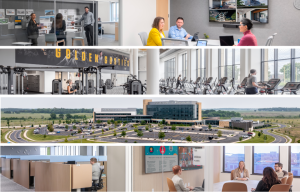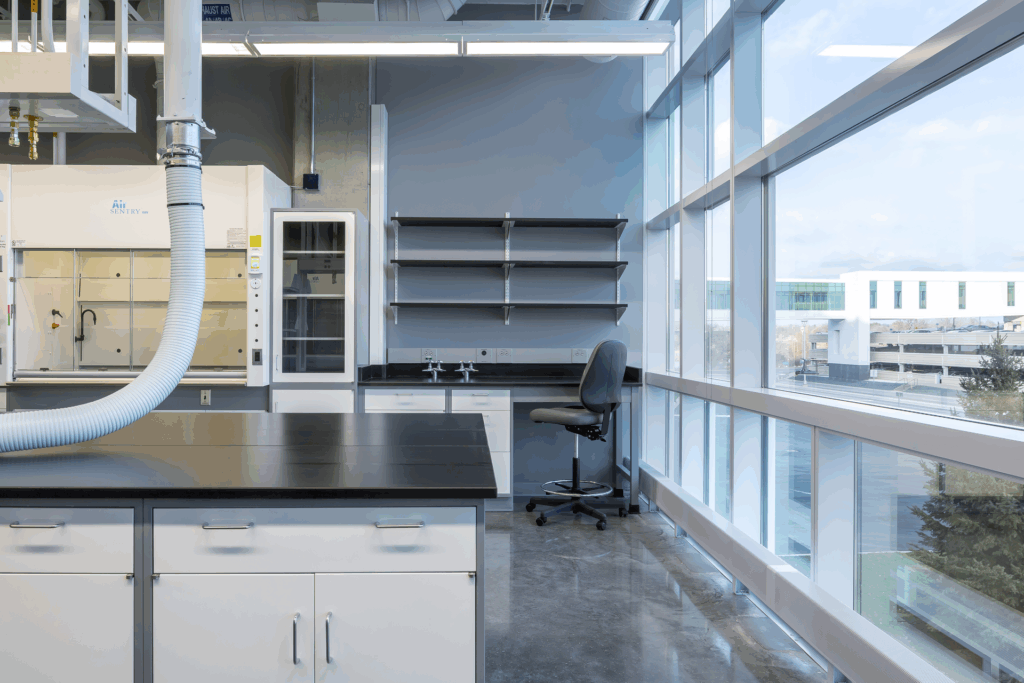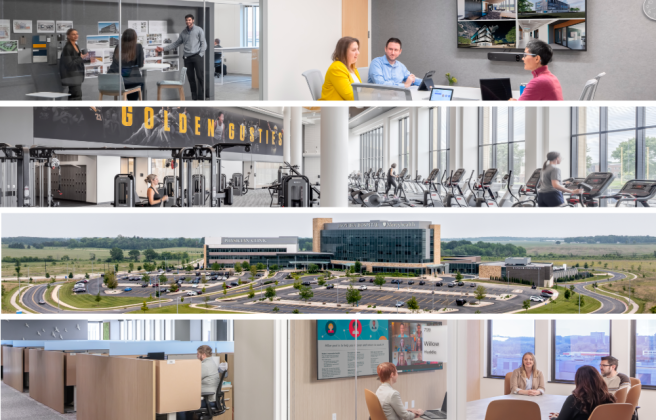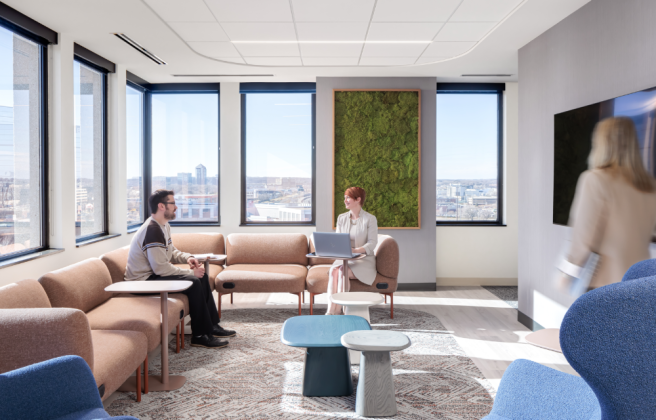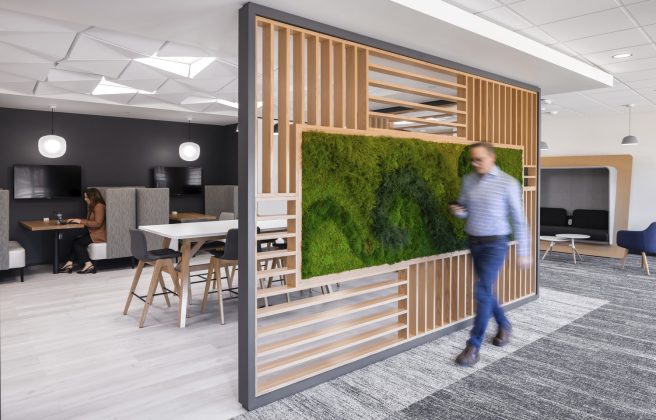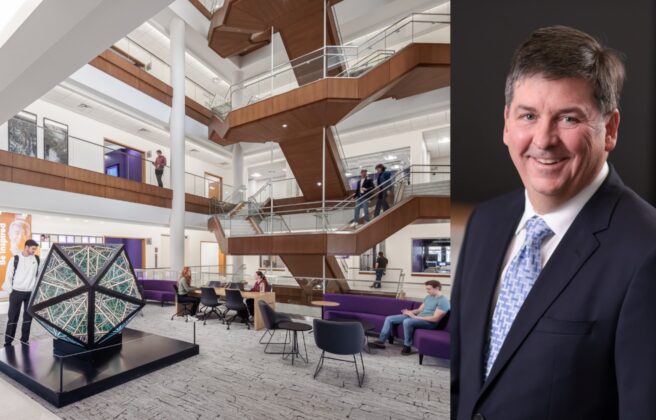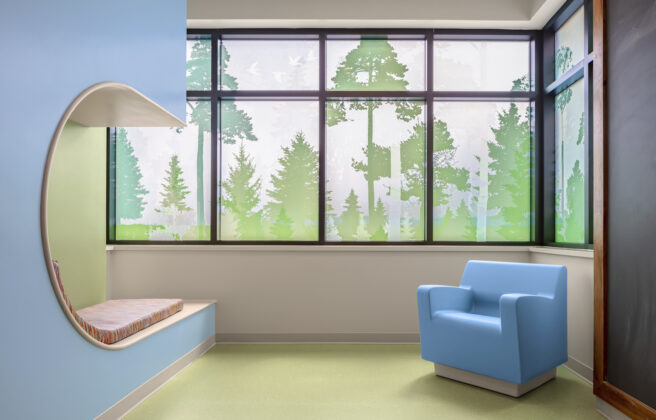At BWBR, we know that designing for science means designing for safety. Nowhere is that more critical than in the creation, conversion, or addition of Biosafety Level 3 (BSL-3) laboratories. These highly specialized spaces allow researchers to study pathogens with respiratory transmission that pose serious health and contagion risks. But getting a lab to meet BSL-3 standards isn’t as simple as adding a few more airlocks. It requires deep knowledge in the science + tech market, a collaborative approach with construction and engineering partners, and a strong focus on risk mitigation.
High-Demand Environments
The COVID-19 pandemic revealed vulnerabilities in global research infrastructure, especially in the availability and condition of existing high-containment labs. As demand grows for new or upgraded BSL-3 and BSL-2+ facilities (labs that function as BSL-2 spaces but are designed to BSL-3 standards—allowing them to flex in the future if needed), organizations are turning to architecture firms to guide the transformation from standard lab to fully certified, operational BSL-3 environment.
These laboratories are designed in compliance with the Biosafety in Microbiological and Biomedical Laboratories (BMBL) guidelines—developed by the Centers for Disease Control and Prevention (CDC) in collaboration with the National Institutes of Health (NIH)—as well as the NIH Design Requirements Manual. These guidelines provide the foundation for safe, efficient, and functional lab design, and we’ll explore the key takeaways to support risk mitigation, researcher safety, and overall well-being in BSL-3 environments.
Starting with Certification
BSL-3 labs must pass a comprehensive certification process before occupancy and undergo recertification every year. That’s why we design from day one with inspection criteria in mind—from HVAC specifications to sealant selections—to help prevent costly retrofits and delays.
The Importance of Site Selection
For new construction, site selection is a critical early phase. We evaluate not just space and logistics, but environmental factors such as prevailing winds, drainage, and isolation from high-traffic areas. Thoughtful site planning adds an additional layer of protection for the surrounding community, reducing the risk of pathogen escape and simplifying containment design.
A Layered Approach to Containment Design
BSL-3 labs require a layered containment strategy, combining both primary barriers (such as biosafety cabinets) and secondary architectural systems that support them.
Here’s what that means in practice:
- Ventilation and Airflow: We work closely with engineers to design HVAC and plumbing systems that prevent cross-contamination and airflow in the wrong direction. These systems must be rigorously tested and recertified annually. Depending on project specifics, the exhaust air from BSL-3 labs may need to be HEPA filtered.
- Physical Separation: BSL-3 labs must be segregated from public areas and low-containment spaces. This often means creating controlled-access zones, double-door vestibules, and airlocks that help maintain both security and environmental control.
- Decontamination Readiness: From water treatment systems to materials and surfaces that can withstand fumigation, BSL-3 lab designs need to withstand both routine and emergency decontamination.
Critical Design Considerations
Every lab project brings unique needs and challenges, requiring customized design strategies, but here are some core features critical to BSL-3 spaces.
- Hands-Free Handwashing Stations at strategic points, particularly near lab exits
- Eyewash Stations positioned for immediate accessibility
- Shower-out Capabilities add an additional layer of safety as staff leave the lab, particularly in high-risk facilities
- Seamless, Sturdy Finishes on floors, walls, and ceilings for easy cleaning and chemical resistance
- Furniture and Casework that are corrosion-resistant and easy to disinfect
- Well-sealed, inoperable windows—no windows that can be opened and thus impact HVAC flows
- Adequate Lighting that minimizes glare and supports focused scientific work
- Flexible Decontamination Zones, enabling full-room sterilization as needed
- Redundancy and Resiliency Planning for back-up ventilation and fail-safe operations
Our Role as Architectural Partners
As a team of designers who specialize in complex science and technology facilities, we bring together design innovation, deep regulatory knowledge, and strong collaboration with engineering and user teams to deliver safe, compliant, and future-ready labs.
Whether an organization is expanding academic research programs or upgrading public health capacity, BWBR is a partner in safe, smart lab design.

